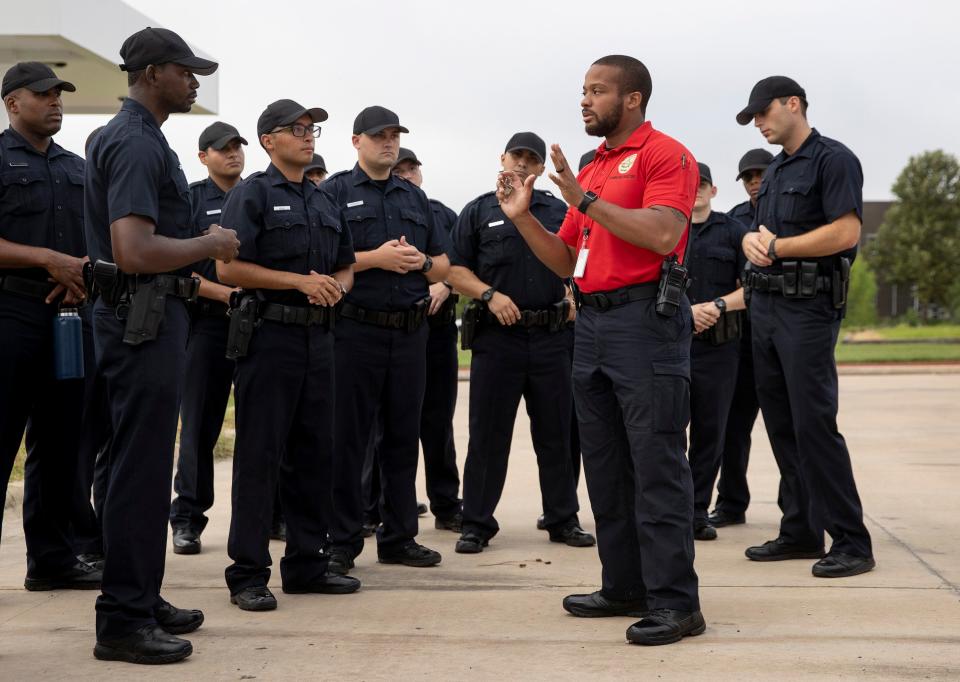Opinion: Adopt the military's model to develop police leaders
- Oops!Something went wrong.Please try again later.
“Thank you for your service.” Our military and first responders have been accustomed to hearing these morale-boosting words in the post-9/11 era. Five simple words that signaled the support of a grateful nation amid the backdrop of two wars.
Public sentiment for public safety officials shifted drastically following the death of George Floyd in 2020. Appreciation and admiration were replaced by anger, suspicion and in many cases, resistance.
Pressure is up, resources are down, and yet the mission is more important and more difficult than ever. Departments must manage a host of compounding and increasingly complex challenges all while dealing with officer burnout, and poor recruitment and retention, which creates tremendous pressure — particularly within the lower ranks.
All of this points to what is public safety’s most essential need today: developing junior leaders. We know from experience that when military units are stressed, leadership is important and it is what separates a good outcome from a bad one. That’s where the military’s long-time focus on leadership training and development can be a helpful model.
Frontline leadership training is critical to success
Perhaps the greatest strength of America’s Army is our Noncommissioned Officer (NCO) Corps. These are the men and women who wear sergeant stripes and are charged with caring for individual soldiers and accomplishing the day-to-day missions of the Army.
Before assuming a leadership role as a Corporal or Sergeant, NCOs must attend a Basic Leader Course where they learn how to lead, motivate and train people. As responsibilities increase, more advanced courses follow, with a focus on teaching the skills needed to lead people at each level.

Public safety departments place great emphasis and resources on training myriad technical skills – basic and advanced – needed to support career progression, yet there is reason to believe there are shortfalls in leader development. To exacerbate the problem, recruitment and retention shortages often result in less-experienced leaders being promoted into roles of increasing responsibility.
Emulating the Army’s sequential, progressive leader training system, agencies should invest time and resources into cultivating the critical people-leading skills required by emerging leaders and equipping them to take on mission-critical roles.
Among these skills are:
Forging High-Performing Teams: High-performing departments require adaptability, trust and collaboration. Ensuring leaders have the behaviors embedded and tools necessary to build trust in teams and their communities is critical. This requires a near-constant review-retool-deliver cycle — a hallmark of the NCO training regimen. Balancing training, education and experience across the three learning domains (institutional, operational, and self-development) is what transformed the NCO Corps and can be applied to public safety leader development.
Collaboration: This critical skill will foster success among internal teams and with external partners and the communities they serve, resulting in improved culture, morale, productivity and outcomes. The speed at which events occur these days has increased the visibility of law enforcement in the public eye and puts added pressure on law enforcement to be able to collaborate and communicate in real-time to ensure officers are prepared for crises.
Empowerment and decision making: By empowering frontline leaders to take ownership of their roles and make critical decisions, teams develop greater creativity while increasing their speed of mission execution. While a classroom environment may have been the preferred method in the past, experiential leaning is a core staple of the NCO training regimen.
The challenges facing public safety today continue to grow. While there is no single panacea, city and state officials would do well to support investment into a tailored and sustainable leader development program for its public safety professionals. Doing so will not only demonstrate department and community commitment to the officer, but also contribute to a culture of greater accountability, trust and collaboration that will resonate inside the department and in the community.
McChrystal is a retired four-star general and the former commander of U.S. and International Security Assistance Forces (ISAF) Afghanistan. Pellegrini is a retired Army Special Forces officer.
This article originally appeared on Austin American-Statesman: Opinion: Adopt the military's model to develop police leaders
